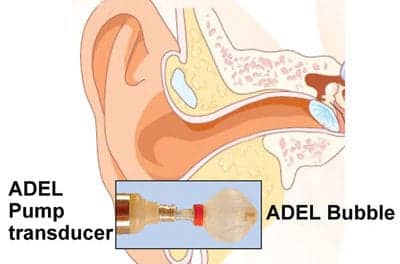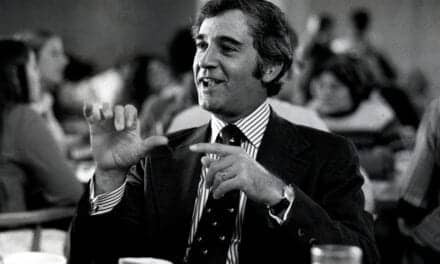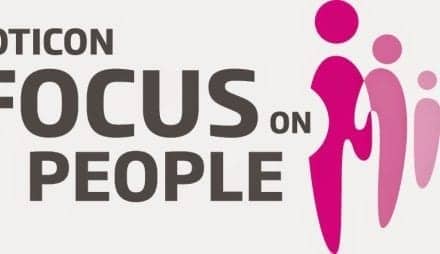Amplifying phonemes within the residual auditory area’s perimeter.

|

|
| Jay B. McSpaden, PhD, BC-HIS, is an audiologist who retired from private practice and currently works as a hearing instrument specialist in Jefferson, Ore. Lawrence D. Brethower, ScD, BC-HIS, is a hearing instrument specialist who has been licensed in Missouri for 24 years, with 9 years of consulting/dispensing in Oregon. | |
Digital signal processing (DSP) hearing instruments are not only an enormous step forward in the processing of acoustic energy and hearing care via amplification (in all its forms), but DSP also facilitates the establishment of, and the filling of, the frequency/intensity-specific residual auditory area of the patient. In previous articles,1-3 we described the importance of approaching the fitting “from the other side of the fence” or from a “glass-half-full” perspective. We contend that it’s not how much hearing loss the patient has incurred that is important; instead, it’s how much you can define and what you can do with “what’s left to work with”—the residual cochlear hair cells and the individual’s functional auditory system, as well as their ability to use these residual systems for cognitive benefit.
Digital technology no longer requires gain to be directly tied to the output in the instrument’s electroacoustic response. Most “first fit” gain targets are very unforgiving and will work only if the patient is a perfect example of the statistical sample (or the “n”) upon which that target is based. If you are advertising a truly customized or individualized fitting, then you will almost certainly need to make adjustments to that “first fit” program.
With Gus Mueller defining the necessity for loudness discomfort level (LDL or UCL) measures in his October 2003 article,4 and the authors’ articles and education seminars detailing methods for suprathreshold measures, it is hoped that many of our colleagues are taking the extra few minutes to fully define the dimensions of each ear’s residual auditory capacity.
The Technique and Method of Residual Auditory Area Mapping
In our world of hearing care acronyms, two have exquisite application here. They are called ISARA and RAAM:
ISARA: Identifying and stimulating the auditory residual area. This is the technique.
RAAM: Residual auditory area mapping. This is the method.
Both are uniquely apropos in the establishment of the parameters for, and the perimeter of, the “all-important” residual area. That’s true whether it’s a “sliver,” a “slice,” or a “panorama” of the audiogram and audiometric profile of the patient. The multifaceted jewel that is sound is integral to our patients’ spirit, as it engenders their awareness of their being a part of society. It facilitates intellectual discourse, emotional connection, and educational exchange at a level unique to our species.
We suggest a counseling method for achieving realistic expectations by the patient regarding their residual communication capabilities. In this counseling approach, we describe the patient’s residual hearing ability using a shaded audiogram. This shaded audiogram is used to counsel the patient on realistic expectations regarding their remaining hearing ability. It is generated by entering threshold as well as suprathreshold information on the audiogram. The area between the threshold and suprathreshold entries is then shaded. This provides the patient with a visual image of their remaining hearing ability. The hearing care professional can then better counsel the patient and develop a prognosis for a more realistic communication performance expectation level. This shaded audiogram can be accurately described for any patient only after suprathreshold test data have been plotted onto it.
Many of our colleagues have become excited about the visual image created on the shaded audiogram. They’ve become interested for several reasons:
- A truly custom picture of each ear’s residual capacity is clearly defined;
- Appropriate crossover frequency settings, kneepoints, and compression ratios are much easier to see (along with gain and frequency response); and
- With speech mapping software, a patient can immediately become aware of their limited capabilities. Counseling on realistic expectations then becomes much easier. Of course, this generally results in a more satisfactory outcome for both the professional and the patient.
If threshold and suprathreshold abilities are not clearly defined, no one can determine how to modify all of the available electroacoustic parameters. These capabilities are designed into the algorithms and electronics, which exist in digital hearing instruments.
Reading Aloud and Learning to Hear Again
The English language has 26 letters in it. They are arranged in 44 phonemes. It is the phonemes that we must “apprehend.” These combinations are the raw material from which meaning is made. We must teach individuals with hearing impairment to hear, process, use, and understand these amplified fragments, and extract that meaning. In many cases relative to sound signals, what they once knew, they have now forgotten. It’s incumbent on us to guide them in rediscovering these sounds.
They need to practice and learn again. That’s why it’s called auditory rehabilitation.
As children, we were told that luck is the residue of hard work, and that the more you practiced, the luckier you’d get! Patients need to read aloud in a normal, conversational voice for 20 to 30 minutes per day, for at least 30 days. They can read anything: the newspaper, the Bible, a novel, or Dr Seuss.
When they do that, their brains know what they said with 100% accuracy. What they are practicing is the processing of the phonemes through the hearing aids. Via the amplification devices, they will sound uniquely different than ever before. If they do this regularly, aided discrimination scores will improve by about 20%. It’s worth it! It also proves what the first author’s father, PGA Hall-of-Famer Harold (Jug) McSpaden, used to extoll: Practice doesn’t make perfect; perfect practice makes perfect.
The hearing care professionals’ ability to identify and map, then fill the residual auditory area with aided sound, allows them to deliberately choose fullness in the character of the sound. It gives new meaning to the idea of expanding the target. In addition, the concept of mapping in this regard is not unlike mapping a cochlear implant. When the implant processor is first activated, the dynamic range of the array is identified, as defined through subjective assessment. When we routinely utilize the ISARA technique and identify—then stimulate—the residual dynamic range of each ear, we will all prosper.
A patient is likely to reject a hearing instrument fitting if you exceed their LDL by even a single decibel. Yet, some people, including some manufacturers of today’s digital technology, can perfectly predict (if you “theologically” believe in the sanctity of an algorithm) the ability to achieve appropriate gain targets without exceeding each ear’s measured LDL by (even) that 1 dB. They would deny the value of even making suprathreshold measurements. It is our professional responsibility to make certain that the patient is communicating comfortably and as efficiently as their residual hearing ability will allow. There is simply no excuse for a patient not wearing a hearing aid because it is too loud or because there is uncontrolled feedback.

|
|
However, there are cases where patients’ residual hearing abilities may be unable to benefit from a hearing instrument manufacturers’ technology. As hearing care professionals, we must provide realistic prognosis/expectations to our patients—not prescribe to them some “super electro-acoustic device,” which their defective auditory system is unable to accept.
We need to truly utilize the incredible digital technology available to us for the benefit of the hearing impaired. As Sergei Kochkin said, “A customer is not an audiogram; meeting gain targets does not guarantee that the customer’s quality of life will improve.”5 There are also emerging aural rehabilitation tools, such as LACE,6 that will continue to aid patients in “physical therapy of the ears” for the optimal use of their impaired auditory systems.
We tell our colleagues who are entering the field that they will spend 60% of their time with 5% of their patients. Some don’t quite understand this at first, but they soon come to agree. Taking extra time at the beginning of your custom fitting will save you and the manufacturer hours of grief later. Our willingness to demonstrate the advantage of expanding the applications of ISARA will serve the patients in miraculous ways.
Through RAAM, we have the ability to demonstrate to the patient, their partner, and the general public the efficacy of the hearing care professionals’ available tools.
References
- McSpaden JB, Brethower LD. Fitting from the other side of the fence. Hearing Review. 2003; 10(7):16-18.
- McSpaden JB, Brethower LD. The necessity for identifying the patient’s residual auditory abilities. Hearing Review. 2004;11(5):18-20.
- McSpaden JB, Brethower LD. Understanding transitions: between then and now. Hearing Review. 2007;14(2):14-22.
- Mueller HG. Fitting test protocols are “more honored in the breach than the observance.” Hear Jour. 2003;56(10):19-26.
- Kochkin S. MarkeTrak VI: On the issue of value: hearing aid benefit, price, satisfaction, and brand repurchase rates. Hearing Review. 2003;10(2):26.
- Sweetow R. Physical therapy for the ears: maximizing patient benefit using a listening retraining program. Hearing Review. 2005;12(10):56-58.
Correspondence can be addressed to Lawrence D. Brethower at , or Jay B. McSpaden, PhD, at .
Citation for this article:
McSpaden JB, Brethower LD. Auditory rehabilitation in the digital age. Hearing Review. 2008;15(13):20-22.





